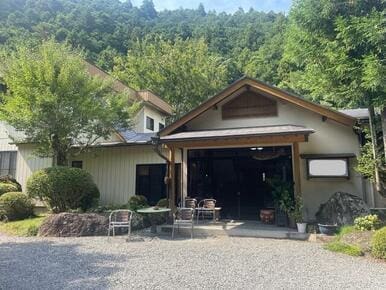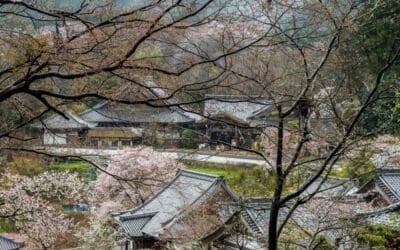A recent post on Reddit exposed a critical truth about Japan’s real estate market. A prospective buyer confessed, “I’ve spent months searching for a realtor for Bargain Japanese Properties in Morioka—only to find no one willing to touch them.” This experience is not unique. It highlights a common misconception among foreign buyers who are lured in by impossibly low listing prices for Vacant Japanese Houses (akiya).
The reality is that those eye-catching prices are not a discount; they are a warning sign. They signal the presence of hidden costs, complex regulations, and significant renovation needs that deter local real estate agents and inexperienced buyers. Unlocking the true potential of these properties requires more than just the purchase price—it demands a strategic budget for expert Japanese Real Estate Services and a deep commitment to projects that others ignore. This guide deconstructs the illusion of the bargain and provides a playbook for making a smart, successful investment.
The "Bargain" Illusion: Deconstructing the Hidden Costs
Why That ¥300,000 Farmhouse is Anything But Cheap
A ¥300,000 farmhouse, when viewed from a screen thousands of miles away, looks absolutely irresistible. However, beneath that so-called “bargain” price lie significant liabilities. These hidden costs can quickly dwarf the initial investment, turning a dream into a financial nightmare. Understanding these hidden factors is the first and most critical step in assessing any of the bargain Japanese properties you encounter online. Without professional guidance, you are navigating a minefield blindfolded.

Structural Decay and Deferred Maintenance
The primary issue is the extensive structural decay and deferred maintenance common in these homes. Many of these vacant Japanese houses have been neglected for decades, left to the mercy of the elements. Japan’s humid climate is particularly harsh on traditional wooden structures. This leads to common and expensive issues like rotted support beams, widespread termite damage, and crumbling foundations. A simple roof leak that went unfixed for years can cascade into catastrophic water damage, compromising the entire structure. These are not minor repairs; they are full-scale restoration projects. This is a key reason why a property ends up on a list of bargain Japanese properties in the first place.
The Regulatory Labyrinth of Japanese Real Estate
Buying one of these vacant Japanese houses is merely the first hurdle. The second, and often more challenging, is navigating the complex web of local and national regulations. This is where professional Japanese real estate services become indispensable. For example, a property might be designated saikenchiku fuka. This critical classification means you are legally not permitted to rebuild on the land if you tear the existing structure down. This single detail can completely alter the value and potential of the property, yet it is often buried in documents an untrained eye would never understand.
Furthermore, navigating heritage rules, agricultural land laws, and specific zoning overlays also requires specialized consultants. Each municipality has its own set of rules that can impact everything from how you can renovate a building’s facade to what kind of business you can operate on the premises. Attempting to manage this without expert legal and real estate services is a recipe for disaster. These regulations protect communities but can easily trap a naive investor in a project that is legally and financially unviable.
Resale Challenges and Pervasive Infrastructure Gaps
There is a simple reason why many vacant Japanese houses are so cheap: they are located in areas with declining populations. This demographic reality directly shrinks the pool of future buyers, making a quick or profitable flip highly unrealistic. You must think of your purchase not as a short-term trade but as a long-term commitment to a place. The low entry price reflects a low-demand market.
Furthermore, many rural properties suffer from significant infrastructure gaps. They often lack connections to municipal sewage systems, relying on older septic tanks that may need complete replacement. Reliable, high-speed internet—a basic utility for modern life and business—is also not a guarantee. These infrastructure deficits can render a property effectively uninhabitable for modern use without major additional investment, further complicating the appeal of seemingly cheap bargain Japanese properties. Professional services can help assess these gaps before a purchase is ever made.
The Search and Vetting Process: Finding Viable Properties
How to Move Beyond Generic and Picked-Over Listings
To find truly viable properties, you must move beyond generic international listing websites. The best vacant Japanese houses are often unlisted and trade hands through local networks. A proactive search process, guided by professional Japanese real estate services, is absolutely essential for finding these hidden gems. The most well-known bargain Japanese properties advertised on international portals are often the ones that have been picked over and rejected by locals who know better.
The real opportunities are found through municipal akiya banks and, most importantly, through established local relationships. A skilled real estate professional with deep community ties will hear about available properties long before they are ever listed publicly. They talk to community leaders and families directly. This insider access provided by quality Japanese real estate services is not just a benefit; it is a critical strategic advantage.
Rigorous due diligence is completely non-negotiable. Your team must map official “hazard zones” to check for risks of flooding, typhoons, or landslides. You must also hire a structural engineer familiar with traditional Japanese wooden-frame construction, as they can spot critical issues a Western-trained inspector would certainly miss. This expert vetting is a core component of good Japanese real estate services and is essential for filtering out unsafe or financially unviable vacant Japanese houses.
Post-Purchase: The Real Work Begins
Turning a Vacant House into a Valuable Asset
Once you own one of these vacant Japanese houses, the project has just begun. The renovation and management phase is where true value is created or lost. This is the stage that requires the most professional oversight. Comprehensive Japanese real estate services extend far beyond the initial purchase and into this crucial, value-adding phase.
A full-service firm will manage the entire renovation process. This includes finding and coordinating carpenters skilled in traditional techniques, securing the proper municipal permits, and ensuring all work meets Japan’s strict building and earthquake-resistance standards. This level of project management is crucial for keeping your renovation of a seemingly “bargain” property on budget and on schedule. Without it, costs can spiral, and timelines can stretch indefinitely.
If your goal is to generate rental income, the work continues. Ongoing management services will handle everything from creating compelling property listings to managing bookings, guest communications, and routine maintenance. Professional marketing is key to turning one of these bargain Japanese properties into a profitable, cash-flowing asset that provides lasting value.




0 Comments